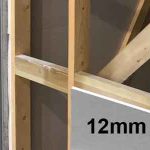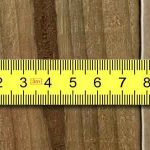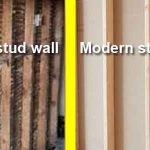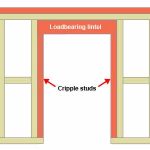Noggins are small pieces of timber that are placed between studs in walls and between floor joists. Their main goal is to add strength and stability to a timber frame. They are also used for supporting the edges of surfaces that are fixed to them, such as plasterboards.
Noggins are needed in most stud walls that are standard room height, or higher. In a UK home, this is usually between 2.2m – 2.6m, although they can be higher.
The noggins tie the frame together and add considerable strength to the structure. They will also stop movement in the timber, such as warping, bowing, or twisting.
What height do you put noggings in a stud wall?
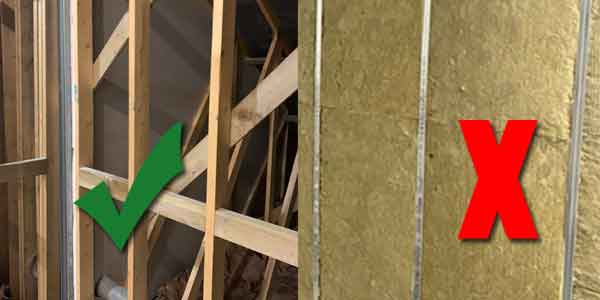
The standard height for noggins in a stud wall is 1200mm from ground level. This is roughly halfway up the wall in most instances. It also provides a convenient fixing area for 1200mm x 2400mm plasterboards that are fit horizontally.
With that said, you are not forced to fit boards horizontally, and if the room height is around 2.4m or lower it will often make sense to fit the boards vertically. This is particularly true for tapered edge boards that will be dry lined.
The other advantage of fitting boards vertically, is that there are no horizontal joints, which avoids lines showing through the plaster and potential areas for cracks to appear.
However, even when fitting boards vertically you still need to add noggins. Without them the wall will be far weaker and much more prone to movement.
Should noggins be screwed or nailed?
When you fit your noggins in place you will have several options for fixing them. The option you choose is entirely up to you and there is no right or wrong answer. Essentially you can choose between nails or screws.
The size of fixing you use will be the same whichever you choose, and, in most instances, this will be around 4 inch, although you can probably get away with 3-3.5 inch if you are using screws.
By far the easiest way to fit noggins would be with a nail gun. This is so much easier as you can literally hold the noggin in place and fire a nail through. You will need to add two nails either side for a strong fixing and this can be done very quickly with a nail gun.
Screwing whilst holding noggins in place can be more difficult and nailing can be even harder, especially when you have a slightly loose noggin. However, there is a handy tip to make the job easier (and no its not staggering the noggins).
Tip – Create a prop to stand your noggins on.
Creating a prop is very easy, you just need to cut a piece of timber that will stand between the studs and hold the noggin in place. Your noggins will be 1200mm from the floor to the centre of the noggin. Therefore, you will need to remove the width of the sole plate and half the width of the noggin. If you are using standard 3×2 timber, this will usually be around 50mm thick, so your prop will be around 1125mm. Obviously measure this for yourself to make sure, as the timber you are using may be a different size.
Once your prop is cut, you can place it below your noggins to hold them in place. Now even if you are hammering 4” nails, it will be much easier as the noggin won’t move much, even if it is loose.
Do you need noggins in metal stud walls?
Whilst most stud walls in residential properties are made from timber. It is not the only option, and particularly in industrial settings metal studwork is extremely common.
Metal studwork (also known as metsec) is a lightweight metal stud system. It is very easy to work with, it’s extremely light, and once it is fit and boarded it forms a very strong partition.
However, despite its lightweight and flimsy appearance the manufacturer states they don’t require noggins.
The approach to this can vary. This is because most traditional joiners are used to fitting noggins in timber, and they will stress that it adds stability. Some others will be more than happy that there is less work required. This can be particularly beneficial if you are fitting metsec on price work, as adding noggins is quite a bit of extra work. Not doing it, means you can get much more wall up, in far less time.
Individual sections of metsec do seem very flimsy, you can cut them with tin snips, and they can be easily bent. Even the screws use to fix them together seem small. However, they do not suffer from the natural movement that wood does. It will never twist or warp. Therefore, the noggins serve less purpose. This is even more true if boards are fit vertically and there are no horizontal joints.
Anyone who fits metsec for the first time, are usually quite surprised at how robust the finished, boarded wall ends up being.
Conclusion
In most standard timber studwork, noggins are a requirement. It does require a considerable amount of extra work. However, it will add a huge amount of stability and rigidity to your wall. This will ensure that it stands the test of time.
If you are looking for a lightweight easy to install option, that doesn’t require noggins, then you might want to consider metal studwork, it is not as common in residential settings, but it is certainly a viable option

